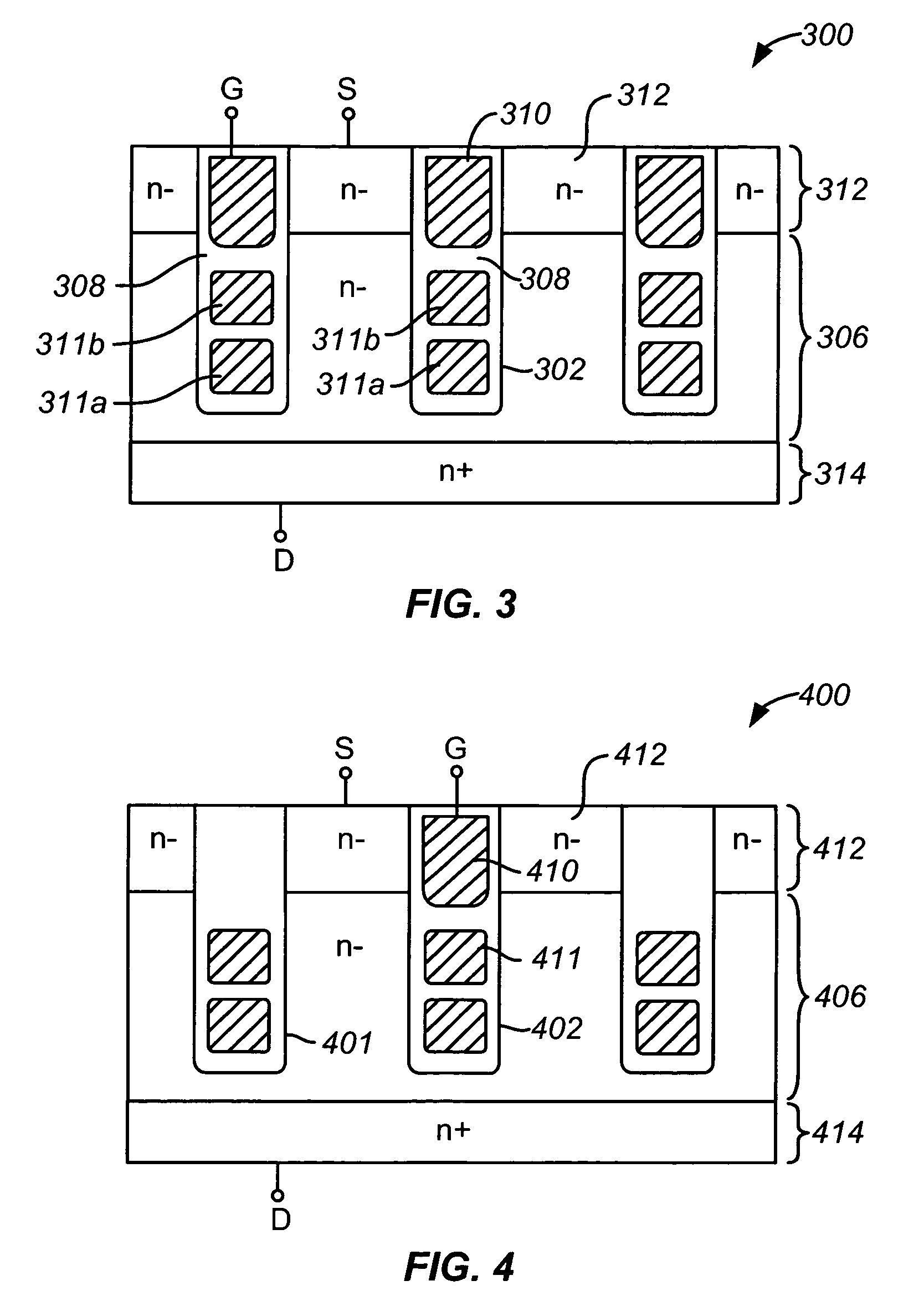Accumulation device with charge balance structure and method of forming the same
a technology of accumulation mode and charge balance, which is applied in the direction of dc-ac conversion without reversal, transistors, basic electric elements, etc., can solve the problems of low efficiency and low on-resistance, and achieve the effect of increasing the blocking capability of accumulation-mode field effect transistors
- Summary
- Abstract
- Description
- Claims
- Application Information
AI Technical Summary
Benefits of technology
Problems solved by technology
Method used
Image
Examples
Embodiment Construction
[0041]In accordance with the present invention, charge spreading techniques are advantageously integrated in vertical and lateral accumulation-mode power devices to achieve lower on-resistance, higher blocking capability and improved efficiency.
[0042]FIG. 2 shows a simplified cross section view of an exemplary accumulation-mode field effect transistor 200 with alternate conductivity regions 203, 205 extending vertically parallel to the current flow. In this example, transistor 200 is an n-channel transistor with a gate terminal formed inside each of trenches 202, n-type channel regions 212 between trenches 202, a drift region 206 that includes opposite polarity columnar n-type and p-type sections 203 and 205, and an n-type drain region 214. Unlike enhancement-mode transistors, accumulation-mode transistor 200 does not include a blocking (p-type in this example) well or body region inside which the conduction channel is formed. Instead a conducting channel is formed when an accumulat...
PUM
 Login to View More
Login to View More Abstract
Description
Claims
Application Information
 Login to View More
Login to View More - R&D
- Intellectual Property
- Life Sciences
- Materials
- Tech Scout
- Unparalleled Data Quality
- Higher Quality Content
- 60% Fewer Hallucinations
Browse by: Latest US Patents, China's latest patents, Technical Efficacy Thesaurus, Application Domain, Technology Topic, Popular Technical Reports.
© 2025 PatSnap. All rights reserved.Legal|Privacy policy|Modern Slavery Act Transparency Statement|Sitemap|About US| Contact US: help@patsnap.com



